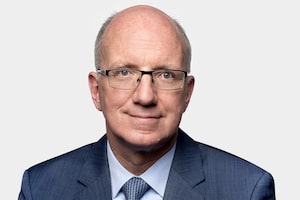
Energy company ConoccoPhillips opted to stick around after a long list of global players quit the oil sands, citing green house gas emissions.Mark Thiessen/The Associated Press
Global energy giant ConocoPhillips Co. COP-N can invest almost anywhere in the world, as it searches for new oil and gas reserves and delivers its sustainability strategy – but its biggest bet is in Alberta.
The Houston-based company forecasts spending up to US$11.3-billion this year on projects in Alaska, Australia, Malaysia, Norway, Qatar and the Midwestern U.S., while also lowering its greenhouse-gas emissions (GHGs).
Standing on top are the Alberta oil sands, which many international energy players exited over the past decade, in part because of environmental concerns. The region received a $4.4-billion vote of confidence on Friday from ConoccoPhillips. If money talks, then several billion dollars just professed its love for Fort McMurray, and an industry that is central to Alberta’s economic future.
ConocoPhillips’ decision to acquire the 50-per-cent stake in the Surmont project it didn’t own, elbowing rival bidder Suncor Energy Inc. out the way, signalled a sea change in sentiment. Energy companies now see a way to increase oil-sands production, while still hitting aggressive GHG reduction targets.
The economics in Alberta are compelling for ConocoPhillips. Owning all of Surmont is expected to boost the company’s free cash flow by US$600-million annually. In a report, analyst Scott Hanold at RBC Capital Markets said taking full control of the project “makes logical strategic sense and helps to bolster the company’s leading cost of supply, break-even point, and free cash flow outlook.”
But rather than just talk about how much money his company will make in Alberta, ConocoPhillips chief executive officer Ryan Lance highlighted how the acquisition fits into the company’s sustainability strategy.
“We look forward to leveraging our position as 100 per cent owner and operator of Surmont to further optimize the asset while progressing toward our overall interim and long-term emissions intensity objectives,” said Mr. Lance in a press release announcing the deal. ”We will remain on track to achieve our previously announced accelerated GHG intensity reduction target of 50 to 60 per cent by 2030.”
Opinion: Feds should not waste their $15-billion Canada Growth Fund on carbon capture for oil
Analysts see the company hitting both sustainability and financial goals. In a report, Paul Cheng at Scotiabank said: “ConocoPhillips is focused on growing production, structurally lowering costs, and reducing GHG emissions intensity.”
ConoccoPhillips opted to stick around after a long list of global players quit the oil sands, citing GHG emissions, including Surmont seller TotalEnergies SE TTE-N of France. Shell PLC SHEL-N, Norway’s Statoil ASA and Marathon Oil Corp. MRO-N also bailed out.
ConocoPhillips’ decision to double down on Surmont, rather than hand half the project to Suncor, is a bet on technology such as carbon capture and storage, or CCS. In a recent investor presentation, the company outline how it plans to hit net-zero emission in the oil sands by 2050. ConocoPhillips projects a third of the reduction will come from existing approaches, a third from new technology and the remainder from CCS.
Can Surmont hit these goals? In the next two or three years, experts at the Pembina Institute – a Calgary-based think tank focused on the energy transition – predicted that all oil-sands producers will struggle to meet emission-reduction targets. Projects such as a $16.5-billion CCS facility in Northern Alberta are taking too long to permit and build.
In the long term, the Pembina Institute says ConocoPhillips and the five other deep-pocketed partners in the Pathways Alliance, a group of oil-sands producers, have the resources and skills needed to deliver both the oil that fuels the economy and the GHG cuts that will save the planet.
“Given the available technologies for lowering emissions that have already proven to be viable at a commercial scale, there is an argument that Canada’s oil and gas sector as a whole – with the oil sands as a substantial subsector – is better positioned than other parts of the Canadian economy to meet or exceed Canada’s 2030 emissions reduction targets,” said the Pembina Institute in a recent report.
From wildfires to foreign energy company departures, there hasn’t been much to celebrate in Fort McMurray in recent years. ConocoPhillips’ decision to search the world for opportunities, and end up in Alberta, marks a reversal for fortune.
 Andrew Willis
Andrew Willis